Oneplus Two
Introduction
So, another flagship killer means a) the original left some unfinished business or b) OnePlus ran out of smart taglines. It would've made little sense to OnePlus to revise the job description but, while the OnePlus 2 is clearly superior it lacks one thing the original had, the benefit of surprise.It's what got OnePlus into the flagship club and it seems the Chinese are now playing by the club's rules rather than trying to break them. Fair enough, we know they're good at the latter. Time to see them in their new role.
To begin with, the OnePlus 2 is clearly more sophisticated. Still a big handset but looking better than its predecessor. It uses some of the best tech currently available and the latest Android OS, while the breakup with CyanoGen is another sign of the company's emancipation. Not a decision that will get everyone's approval but perhaps OnePlus are confident enough to pursue their own brand of skinning Android.
OnePlus started as a rebel company with the single goal of stirring up the flagship segment. The OnePlus One was not just a premium phone at an affordable price - it was good at creating hype and pretty much managed to justify it. The "Never Settle" startup is now a household name, quite an accomplishment in a single generation. Things have been set up nicely for the arrival of the OnePlus 2 but it's got plenty to live up to.
Key features
- 5.5" LTPS display with 1080p resolution; 401ppi; Corning Gorilla Glass 4
- 64-bit Qualcomm Snapdragon 810 chipset; CPU: 4x Cortex-A57 at 1.8GHz and 4x Cortex-A53 at 1.5GHz; Adreno 430 GPU; 3GB (16GB model) or 4GB (64GB model) of RAM
- 13MP main camera with dual-LED flash, optical image stabilization, laser-assisted auto-focus
- 4K video capture at 30fps; 1080p video capture at 30fps; 720p video capture at 120fps
- 5MP front-facing camera, 1080p at 30fps video recording
- Oxygen 2.0 OS based on Android 5.1.1 Lollipop; Android M features
- 16GB or 64GB of built-in storage
- Quad-band GSM/GPRS/EDGE; UMTS/HSPA+; 4G LTE Cat.4 connectivity
- Wi-Fi a/b/g/n/ac; Bluetooth 4.1; USB 2.0 type-C port; GPS with A-GPS and GLONASS
- Dual-microphone active noise canceling
- Attractive price tag
- Customizable exterior via a selection of extra StyleSwap covers
- 3,300mAh non-removable battery
Main disadvantages
- No microSD expansion
- Non-removable battery
- USB Type-C is still rather new and may require extra adapters
- CPU downclocked to address Snapdragon 810 cooling issues
- No NFC
- No Quick Charging or wireless charging
- Though OnePlus promises a lot less hassle with invites, the stock is likely to be limited
 The non-expandable storage and inaccessible battery were something
the loyal OnePlus fans could very well live with but the Snapdragon 810
may be a questionable choice. OnePlus has down-clocked the CPU to 1.8GHz
to alleviate the overheating and this is something we'll be watching in
the performance chapter.
The non-expandable storage and inaccessible battery were something
the loyal OnePlus fans could very well live with but the Snapdragon 810
may be a questionable choice. OnePlus has down-clocked the CPU to 1.8GHz
to alleviate the overheating and this is something we'll be watching in
the performance chapter.Before we get there, we'll get a real feel of the OnePlus 2 in hand and run our usual screen and battery tests. So, without further ado, we are pulling the wraps off on the next page.
Unboxing the OnePlus 2
The OnePlus 2 comes in a compact red box, along with a 2A charger, which is now inside the main box unlike with the OnePlus One, and a tangle-free USB type-C cable. The flat, bright red cable is a great little accent - a feature OnePlus did well to borrow from the original.It's worth noting that the cable is reversible at its both ends. Not only is the USB Type-C connector reversible by design, but OnePlus has also made the other standard-A plug reversible, so no matter which end of the cable you're attaching, you never have to worry about getting it wrong.
No headphones are bundled with the phone, which should be no surprise either if you're familiar with the OnePlus One.
OnePlus 2 360-degree spin
The new OnePlus 2 has the same 5.5" display as its predecessor and nearly the same footprint. At 151.9 x 74.9 x 9.9mm, the OnePlus 2 has a marginally better screen to body ratio and is just a millimeter thicker. The metal frame has put some extra 13g to a total weight of 175g.Design and build quality
The OnePlus does well to tastefully improve a familiar design. The magnesium alloy frame is a strong but not overdone accent, while the back of the phone has a texture called Sandstone Black just as before but the finish and texture are somewhat different and more plastic compared to the OnePlus One. And for good reason, the old texture was a love and hate affair.Aluminum sides have a smooth anodized finish and subtle chamfered edges. The dark antenna cutouts are discrete and don't detract from the appearance and the bottom has beautifully machined holes placed symmetrically on either side of the USB Type-C port.
 The OnePlus 2 will get a handful of replaceable StyleSwap rear covers
in Bamboo, Rosewood, Black Apricot, and Kevlar, all of which are made
from real wood and DuPont Kevlar. These can be purchased separately from
OnePlus website for $26.99 each. You can also get a gray case for
$10.99 or a flip cover for $19.99.
The OnePlus 2 will get a handful of replaceable StyleSwap rear covers
in Bamboo, Rosewood, Black Apricot, and Kevlar, all of which are made
from real wood and DuPont Kevlar. These can be purchased separately from
OnePlus website for $26.99 each. You can also get a gray case for
$10.99 or a flip cover for $19.99. Customization aside, the removable cover lets you access the
dual-nanoSIM compartment but the 3,300mAh battery is not
user-replaceable.
Customization aside, the removable cover lets you access the
dual-nanoSIM compartment but the 3,300mAh battery is not
user-replaceable.The side keys are also made of metal, as is the small but stylish camera plate around back with very thin polished chamfered edges that bounce off the light.
The entire front of the OnePlus 2 is protected by a piece of Gorilla Glass 4, which is said to double the scratch resistance of the previous generation. Fingerprints do stick on the front glass though.
The OnePlus 2 is rather heavy at 175g, but the sandstone texture at the back offers excellent grip. The premium build and finish will certainly be appreciated while the size and weight are a little above the average for 5.5" phablets without compromising the handling.
Nothing about this phone feels like corners were cut to save cost and it looks and feels like a proper flagship device, especially if you choose to get the optional wood or Kevlar back covers.
Controls
The front of the OnePlus 2 is dominated by the 5.5" LCD and OnePlus has managed to slim down the bezel for a slightly better screen-to-body ratio but it's still far from stellar.Above the display, a selfie cam and a status LED are next to the earpiece, along with some hidden sensors. Below is the capacitive Home key with an integrated fingerprint scanner. On either side of the Home button are two hidden capacitive buttons that come alive when you touch them with subtle backlighting for each. The touch targets for these are quite narrow though so you have to be fairly precise while hitting them.
The right side of the OnePlus 2 features the usual volume rocker and Power/Lock key, both made of metal. The buttons are nearly flush with the surface and aren't raised enough to locate easily by just running your thumb on the side. This sometimes makes you miss them or accidentally press the wrong one as the power button isn't differently textured.
OnePlus 2 introduces a new hardware switch on its left side for active sound control. It has three positions: disable all notifications (top), priority notifications only (middle), and all sounds on (bottom). This sound switch became hugely popular on the iPhone we like how OnePlus implemented it on the Two.
The top of the OnePlus 2 has the audio jack and the secondary mic. The bottom is where the new USB Type-C port is, a grille on each side for the primary mic grille on the left and loudspeaker grille on the right. It's worth noting that the OnePlus 2 does not include support for the Qualcomm QuickCharge feature, even though the chipset inside supports it. There is no wireless charging support either.
The back of the Two has the same sandstone black finish as the OnePlus One. The 13MP OIS camera lens is centrally placed near the top, with dual-LED flash and laser-assisted auto focus.
The back panels are easily removable to let you swap cards in the dual nano-SIM tray, but the battery is still non-removable.
Display
Just like its predecessor, the OnePlus 2 comes with a Japan Display-made 5.5" screen of 1080 x 1920 resolution for a pixel density of 401ppi, still a pleasingly sharp, even at this diagonal. While QHD is getting common by the day and would've made a difference in web pages, we still prefer the 1080p screens as the lower resolution as it's less taxing on the performance and battery, while still being adequately sharp.The display is an LTPS unit, a low temperature polysilicon LCD, meaning it shouldn't heat up too much even with the brightness cranked up for long periods of time. The LCD is also an IPS unit, which should offer wide viewing angles. Finally, the screen is covered by the new Gorilla Glass 4 for extra protection.
Naturally, the LCD has a standard RGB (red, green, blue) matrix with equally-sized sub-pixels of each color.
 OnePlus 2's display is a major improvement over the previous
generation. It offers much deeper blacks and excellent contrast, but had
to sacrifice the high brightness. In fact, the maximum brightness is
almost 50% lower than the OnePlus One.
OnePlus 2's display is a major improvement over the previous
generation. It offers much deeper blacks and excellent contrast, but had
to sacrifice the high brightness. In fact, the maximum brightness is
almost 50% lower than the OnePlus One.The new display is among the better performance out there and we definitely like the improvement.
| Display test | 50% brightness | 100% brightness | ||||
| Black, cd/m2 | White, cd/m2 | Black, cd/m2 | White, cd/m2 | |||
| 0.39 | 317 | 805 | 0.75 | 598 | 799 | |
| 0.158 | 180 | 1139 | 0.300 | 356 | 1187 | |
| 0 | 152 | ∞ | 0 | 398 | ∞ | |
| 0.000 | 208 | ∞ | 0.000 | 362 | ∞ | |
| 0.065 | 89 | 1372 | 0.322 | 450 | 1398 | |
| 0.05 | 77 | 1435 | 0.38 | 584 | 1516 | |
| 0.09 | 130 | 1450 | 0.43 | 626 | 1453 | |
| 0 | 208 | ∞ | 0 | 473 | ∞ | |
| 0 | 274 | ∞ | 0 | 529 | ∞ | |
| - | - | - | 0.68 | 789 | 1158 | |
The sunlight readability is improved too, though not by much. The OnePlus 2 screen does a notch below the average performance, but is rather disappointing for a flagship. Taking the phone outside in a bright sunny day and you would lose most of the perceivable contrast and colors, though you would still be able to see what's happening on the screen.
Sunlight contrast ratio
- Nokia 808 PureView 4.698
- Nokia Lumia 820 2.193
- HTC One (E8) 2.185
- Oppo N3 2.181
- Nokia Lumia 920 2.17
- Huawei Honor 6 2.169
- OnePlus Two 2.165
- HTC One X 2.158
- Asus Zenfone 2 ZE551ML 2.149
- LG Aka 2.145
- Nokia N8 2.144
- Nokia Lumia 620 2.142
- Samsung Galaxy mini 2 1.114
Battery life
OnePlus 2 is powered by a non-removable 3,300mAh battery, which means 6.5% more power juice than the original. Coupled with the brighter screen and the upgraded hardware, it's hard to make any predictions so we settled down to our trademark test.The OnePlus 2 did improve the 3G talk time, but didn't impress in the video playback and web browsing tests. The standby performance turned out quite poor (less than the OnePlus One), which led to an overall decrease of the final endurance rating.
Despite our concerns, the OnePlus 2 scored a respectable overall rating of 61 hours - the expected time between charges if you use the device for an hour each of calls, browsing and video playback a day.

Our proprietary score also includes a standby battery draw test, which is not featured in our battery test scorecard but is calculated in the total endurance rating. Our battery testing procedure is described in detail in case you want to learn more about it.
Connectivity
The OnePlus One offers a solid connectivity package out of the box, the notable exceptions being NFC and an IR blaster.With quad-band GSM, and a combination of HSPA and LTE bands, the OnePlus 2 is truly a global device. The supported LTE is Category 4, which means theoretical maximums of up to 150Mbps of downlink and up to 50Mbps of uplink.
There's a full set of a/b/g/n/ac Wi-Fi standards on both the 2.4GHz and 5GHz bands, Wi-Fi Direct, hotspot and DLNA media sharing on supported TVs and PCs.
There's stereo Bluetooth 4.1, as well as microUSB 2.0 with On-the-go support.
The OnePlus Two is among the very first devices to support USB Type-C, though that's not entirely accurate. Type-C is a new reversible connector for USB that builds on top of USB 3.1. The cable supplied with the phone ends on a USB 2.0 reversible plug though.
That's important to note for two reasons. The first one being speed - USB 3.1 Type-C cables can go up to 10Gbps, but the OnePlus 2 is limited to USB 2.0 speeds (480Mbps). The second thing is that Type-C connectors are meant to go on both ends of the cable since the standard allows for functionality to go both ways - that's data transfer and even charging. The new standard also brings built-in video output capabilities and native fast charging, neither of which are available on the OnePlus One.
 Android 6.0 Marshmallow is going to add official support for USB
Type-C connectors and then you should be able to charge connected
peripherals. That's still not possible at this time though.
Android 6.0 Marshmallow is going to add official support for USB
Type-C connectors and then you should be able to charge connected
peripherals. That's still not possible at this time though.While there is no doubt that USB Type-C is the future, having the connector at present seems more of a drawback than a feature. As it stands now, it is equivalent of having a proprietary port on your phone, as you can no longer simply use any microUSB cable or charger with your OnePlus 2 without a compatible cable or adapter. It is pretty much what iPhone users have to deal with thanks to the Lightning connector, except right now there is a greater chance finding someone with a Lightning cable than a USB Type-C cable. Until this connector becomes more widespread, you'd have to rely on an adapter. Fortunately, you can buy one from OnePlus for $9.99 or even cheaper online.
We lacked a proper adapter, so we couldn't test how USB on-the-go and USB Host function.
Oxygen OS 2.0 breathes above Android 5.1.1 Lollipop
The backstory of the Oxygen OS is rather long and outside of this topic. The original OnePlus One came running on CyanogenMod but in the end OnePlus had to come up with an original launcher and drop the Cyanogen entirely. This is how the Oxygen OS was born and it is now in version 2.0.The Oxygen launcher aims to bring a nearly vanilla Android experience enhanced only by few, but useful software tricks. Since Android 6.0 Marshmallow is yet to premiere this fall, OnePlus had to implement a few features on their own before the official support is live.
 OnePlus added fingerprint security support as well as drivers for the
new Type-C USB port - both will be coming as part of Android 6.0. There
are also configurable capacitive keys, a few nice gestures and some
advanced UI customizations. Another Android Marshmallow feature
available out of the box with the OnePlus 2 is the app permissions
manager.
OnePlus added fingerprint security support as well as drivers for the
new Type-C USB port - both will be coming as part of Android 6.0. There
are also configurable capacitive keys, a few nice gestures and some
advanced UI customizations. Another Android Marshmallow feature
available out of the box with the OnePlus 2 is the app permissions
manager.Most of the Android interface is intact - it's the Material design and icons we first met in Android Lollipop. All vanilla Android fans will be pleased to find out OnePlus touched almost nothing as far as homescreens and menu visuals are concerned.
OnePlus added four very useful gestures, which are available on a turned off screen. You can double tap to wake it up, draw O to open the camera, draw V to toggle the flashlight on/off, or draw < > for previous/next track.
Fingerprint unlock is available and it doesn't require to wake up the phone, just put your finger and you will be on the homescreen in a flash. Nice!
As of now, the fingerprint reader can only be used to unlock the phone, although that will change when Android Marshmallow is released and brings API for third party applications to use it in their apps, like on iOS.
The lockscreen is the usual affair - it shows missed notifications. Swiping left or right will fire up the dialer or the camera.
The Oxygen launcher has a feature called Shelf, which takes the form of your leftmost homescreen. Here you can see the weather, your most used apps, and frequent contacts. You can also add widgets here and change the header image. When you first setup the phone it asks if you want to use Shelf. You can also disable or enable it later through the homescreen settings menu.
The notification area is Android Lollipop by the book summoned by a downwards swipe anywhere on the homescreen. An additional swipe or a two fingers swipe reveals quick toggles that include Wi-Fi, Bluetooth, Airplane mode, screen auto-rotate, flashlight, location on/off, and the option to cast the screen. Of course, you can also adjust the brightness of the screen and go into the settings menu too.
The notifications also have one nice feature from Cyanogen, where screenshot notifications have a Delete button next to the Share button so you can instantly delete them from the notifications itself once you're done sharing them.
The app switcher has a neat card interface that allows you to select the app you need by swiping up or down. You can close apps by swiping left or right, or by hitting the dedicated button on the top right corner of each card. Each Chrome tab now can optionally appear as a card, too (Chrome settings). OnePlus added an option to close all opened/suspended apps at once.
Finally, Google Now is summoned by tap and hold on the Home key.
OnePlus added a few UI tweaks of its own - you can reverse the Menu and App Switcher keys, plus you can assign them custom actions upon tap&hold. The notification LED colors are also configurable. Each button has a list of things you can do for various actions.
OnePlus One also included a native support for app permission control. You can go into the Settings menu, check each app permissions, when they were used and if you want, you can disable some of them.
The final extra courtesy of OnePlus is the option to skin the entire Android OS with a dark theme and choose its accent color by your liking.
Performance
OnePlus 2 runs on the latest available Snapdragon 810 chip, which might be among the most powerful beasts on the market, but still resounds rather negative thoughts due to the numerous overheating reports.Unlike other Snapdragon 810-powered devices though, the OnePlus 2 comes with a down-clocked processor, which should help it achieve a lower thermal signature where throttling happens more rarely.
 So, the OnePlus 2 has an octa-core processor with four Cortex-A57
cores at 1.8 GHz and four Cortex-A53 running at 1.56 GHz. There is 3GB
RAM for the 16GB model and 4GB RAM on the 64GB flavor (as is ours). The
GPU, which handles the graphics department is the powerful Adreno 430.
So, the OnePlus 2 has an octa-core processor with four Cortex-A57
cores at 1.8 GHz and four Cortex-A53 running at 1.56 GHz. There is 3GB
RAM for the 16GB model and 4GB RAM on the 64GB flavor (as is ours). The
GPU, which handles the graphics department is the powerful Adreno 430.GeekBench 3 gauges the multi-core processor performance and the OnePlus 2 does excellent. While its CPU clock is lower than the rest of the Snapdragon 810 gang - it performs better and is outrun only by Samsung's latest Exynos 7420.
GeekBench 3
Higher is better
- Samsung Galaxy S6 5215
- Samsung Galaxy S6 edge 5095
- ZTE Axon Pro 4574
- OnePlus 2 4429
- HTC One M9 3761
- LG G Flex2 3604
- LG G4 3509
- Sony Xperia Z3+ final 3402
- Samsung Galaxy S5 3120
- Xiaomi Mi Note 3094
- OnePlus One 2663
AnTuTu 5
Higher is better
- Samsung Galaxy S6 edge 70053
- Samsung Galaxy S6 69396
- ZTE Axon Pro 55956
- HTC One M9 51427
- Sony Xperia Z3+ final 49441
- LG G4 49295
- LG G Flex2 47680
- OnePlus 2 47207
- Xiaomi Mi Note 45632
- Samsung Galaxy S5 45348
Basemark OS 2.0
Higher is better
- Samsung Galaxy S6 edge 1750
- LG G Flex2 1726
- Samsung Galaxy S6 1674
- OnePlus 2 1622
- LG G4 1584
- HTC One M9 1365
- Xiaomi Mi Note 1353
- OnePlus One 1230
- Sony Xperia Z3+ final 1226
- Samsung Galaxy S5 1160
Basemark OS 2.0 (single-core)
Higher is better
- Samsung Galaxy S6 6306
- Samsung Galaxy S6 edge 6173
- Xiaomi Mi Note 6068
- LG G4 5871
- LG G Flex2 5597
- Samsung Galaxy S5 5557
- OnePlus 2 5301
- OnePlus One 5108
- HTC One M9 4688
- Sony Xperia Z3+ final 2764
Basemark OS 2.0 (multi-core)
Higher is better
- Samsung Galaxy S6 edge 27703
- Samsung Galaxy S6 26799
- OnePlus One 19625
- Samsung Galaxy S5 19237
- LG G Flex2 18856
- HTC One M9 18047
- Xiaomi Mi Note 17882
- LG G4 17739
- OnePlus 2 16798
- Sony Xperia Z3+ final 11899
GFX 2.7 T-Rex (1080p offscreen)
Higher is better
- Samsung Galaxy S6 59
- Samsung Galaxy S6 edge 59
- ZTE Axon Pro 55
- Sony Xperia Z3+ final 50
- LG G Flex2 49
- HTC One M9 49
- OnePlus 2 48
- LG G4 34.5
- OnePlus One 28.3
- Xiaomi Mi Note 28
- Samsung Galaxy S5 27
GFX 3.0 Manhattan (1080p offscreen)
Higher is better
- Samsung Galaxy S6 edge 26
- ZTE Axon Pro 25
- Samsung Galaxy S6 24
- HTC One M9 23
- LG G Flex2 22
- OnePlus 2 22
- Sony Xperia Z3+ final 21
- LG G4 14.9
- OnePlus One 12.1
- Samsung Galaxy S5 12
- Xiaomi Mi Note 11
GFX 2.7 T-Rex (onscreen)
Higher is better
- HTC One M9 50
- LG G Flex2 48
- OnePlus 2 46.7
- Sony Xperia Z3+ final 46
- Samsung Galaxy S6 edge 39
- Samsung Galaxy S6 38
- ZTE Axon Pro 35
- OnePlus One 30
- Xiaomi Mi Note 28
- Samsung Galaxy S5 28
- LG G4 24.7
GFX 3.0 Manhattan (onscreen)
Higher is better
- HTC One M9 24
- LG G Flex2 22
- OnePlus 2 22
- Sony Xperia Z3+ final 21
- ZTE Axon Pro 15
- Samsung Galaxy S6 edge 15
- Samsung Galaxy S6 14
- OnePlus One 12.9
- Samsung Galaxy S5 12
- Xiaomi Mi Note 11
- LG G4 9.4
Basemark X
Higher is better
- Samsung Galaxy S6 27169
- Samsung Galaxy S6 edge 27046
- ZTE Axon Pro 22928
- OnePlus 2 21937
- Sony Xperia Z3+ final 20767
- HTC One M9 19848
- LG G Flex2 19360
- LG G4 15090
- OnePlus One 13129
- Xiaomi Mi Note 13075
- Samsung Galaxy S5 11798
Kraken 1.1
Lower is better
- Samsung Galaxy S6 edge 3989
- LG G4 4085
- Samsung Galaxy S6 4154
- LG G Flex2 4621
- ZTE Axon Pro 5374
- HTC One M9 5500
- Samsung Galaxy S5 5968
- Xiaomi Mi Note 6382
- OnePlus 2 6808
- OnePlus One 7008
- Sony Xperia Z3+ final 9204
BrowserMark 2.1
Higher is better
- Samsung Galaxy S6 2718
- Samsung Galaxy S6 edge 2702
- LG G Flex2 2086
- Samsung Galaxy S5 2066
- OnePlus 2 2055
- LG G4 1990
- ZTE Axon Pro 1957
- HTC One M9 1681
- Sony Xperia Z3+ final 1436
- OnePlus One 1339
- Xiaomi Mi Note 748
Yes. The OnePlus 2 packs enough power to handle everything hassle-free for quite a long time. Its processor is fast and 64-bit, the GPU is from the current generation and supports Open GL ES 1.x, 2.0, 3.0, 3.1, TS & GS; Open CL 1.2 and Direct X 11.2.
Long story short, the OnePlus 2 is fast and future proof. But does it overheat?
No, OnePlus 2 does not suffer from overheating issues and performance stuttering. It heats up quite a lot around its top, but apparently down-clocking the CPU did the trick and you don't have to worry it will overheat and throttle down the performance. It still becomes hot in everyday use, even with mundane tasks such as updating Play Store apps, so have that in mind if you are bothered by such things. Still, unless you're holding the phone in landscape you usually don't notice it even if that happens.
Telephony and messaging
The contacts manager features tabbed interface, which displays all contacts and the favorites. You can sync with multiple accounts including Google and Exchange. A button to add a new contact is constantly present in the bottom right corner - you can choose which account to sync the new addition with.The phone app comes with a tabbed interface for speed dial, recent calls and all contacts. The dialer is invoked by taping on its dedicated key and supports smart dialing.
The loudspeaker this time around is just one and is still placed at the bottom. Its sound quality isn't among the best we've heard so far and it could improve on both high and low frequencies for a deeper sound. Still, our test confirms the speaker is probably of the same variety used on the original One - everything came loud and clear, achieving an Excellent score.
Sound quality is not going to win any contests as it's tinny, but the equalizer helps things to an extent.
| Speakerphone test | Voice, dB | Ringing | Overall score | |
| 67.3 | 65.7 | 66.5 | Below Average | |
| 66.7 | 66 | 68.5 | Average | |
| 66.5 | 65.8 | 70.5 | Average | |
| 65.6 | 66.5 | 73.1 | Average | |
| 65.2 | 64.6 | 76.1 | Average | |
| 68.1 | 66.3 | 73.7 | Good | |
| 66.7 | 65.7 | 75.7 | Good | |
| 72 | 66.6 | 77.5 | Good | |
| 71.3 | 73.8 | 79.9 | Very Good | |
| 75.9 | 68.9 | 83.3 | Excellent | |
| 74.8 | 73.5 | 80.2 | Excellent | |
| 75.7 | 73.5 | 80.7 | Excellent |
Messaging is pretty much as straightforward an affair as on every other droid out there. The generic Email app is being decommissioned in favor of the Gmail app. If you tap on its icon, it will tell you the Gmail app is the client that will handle all your emails from now on.
As expected, the default Google keyboard is on board as well. It offers two sleek-looking, brand new skins - Material Dark and Material Light. The duo matches the new look of Android Lollipop.
Some regional versions come with SwiftKey pre-installed and neither this, nor Google Keyboard can be removed.
Multimedia
Google Photos is onboard as well with unlimited backup of your images. Upon opening the app you'll see two tabs - one for all photos and another one for highlights.Viewing a single photo gives you a number of options. You can share it, set it as wallpaper or contact photo, or edit it. The built-in Photos editor is incredibly powerful too.
The Photos app also handles the video files as Android Lollipop lacks dedicated video app. Available video decoders include Xvid, DivX, H.263, H.264 AVC (MKV files), and MPEG-4. The app will play most major file formats, though serious video fans should certainly seek out a more capable solution from the Google Play, as the lack of AC3 audio support is quite limiting. Subtitles aren't supported either.
Finally, Google Play Music is the default player for your tunes on the OnePlus 2. The app has been treated to the new material design, though it functionality remains unchanged - it can play your local files, as well as stream music from the cloud.
You can tweak the sound via the built-in equalizer, enhanced by MaxxAudio. You can choose between Music, Movie and Game default audio enhancements, or you can tweak those to you preferences. Courtesy of MaxxAudio are the manual configuration for the bass, treble, space, dialog and balance.
Audio output is a two-part story
The OnePlus 2 went off to a flying start in our audio quality test. When connected to an active external amplifier, the smartphone posted excellent scores top to bottom and garnished them with very loud output for one of the best performances out there.Unfortunately, the second-gen company flagship failed where it mattered more - our headphones test. Plugging in our standard set caused rather big hikes in stereo crosstalk and intermodulation distortion, while the frequency response started to fluctuate. Volume levels dropped from impressive to just above average, so we can call the results here decent at best.
Anyway, here go the results so you can do your comparisons.
| Test | Frequency response | Noise level | Dynamic range | THD | IMD + Noise | Stereo crosstalk |
| OnePlus 2 | +0.01, -0.03 | -94.2 | 92.8 | 0.0023 | 0.0086 | -94.3 |
| OnePlus 2 (headphones) | +0.65, -0.21 | -93.8 | 92.6 | 0.014 | 0.470 | -50.9 |
| Samsung Galaxy S6 edge | +0.03, -0.01 | -95.6 | 92.8 | 0.0023 | 0.0078 | -95.7 |
| Samsung Galaxy S6 edge (headphones) | +0.05, -0.02 | -92.6 | 92.5 | 0.0028 | 0.044 | -76.9 |
| Samsung Galaxy S6 | +0.01, -0.04 | -95.6 | 92.8 | 0.0024 | 0.0094 | -94.5 |
| Samsung Galaxy S6 (headphones) | +0.02, -0.05 | -92.6 | 91.9 | 0.0025 | 0.042 | -83.4 |
| LG G4 | +0.04, -0.07 | -93.4 | 93.3 | 0.0021 | 0.050 | -92.6 |
| LG G4 (headphones) | +0.93, -0.13 | - 91.4 | 91.9 | 0.013 | 0.244 | -50.4 |
| HTC One M9 | +0.02, -0.06 | -94.8 | 93.0 | 0.0049 | 0.026 | -93.7 |
| HTC One M9 (headphones) | +0.03, - 0.05 | -93.7 | 92.7 | 0.0082 | 0.030 | -91.6 |
| +0.06, -0.02 | -94.0 | 93.9 | 0.0012 | 0.0065 | -73.4 | |
| +0.11, -0.06 | -93.8 | 93.8 | 0.0022 | 0.099 | -65.1 |

OnePlus 2 frequency response You can learn more about the tested parameters and the whole testing process here.
A 13MP OIS camera outs very good photos
The OnePlus 2 has a 13 megapixel camera on the back with optical image stabilization, laser-assisted autofocus, and 4K video recording. Camera was quick with fast shot to shot times and startup. The Oxygen launcher brings a custom camera app, which offers very
clean interface and just few settings. The available modes are Photo,
Video, Panorama, Slow Motion and Time-Lapse.
The Oxygen launcher brings a custom camera app, which offers very
clean interface and just few settings. The available modes are Photo,
Video, Panorama, Slow Motion and Time-Lapse.The standard Photos mode has some advanced shooting modes as HDR, Beauty and Clear Shot. The Clear Shot option snaps 10 photos and combines them into a single image for better quality.
It bears mentioning that camera app has no proper image viewer of its own but only shows a preview if the last image shot. The moment you touch the image, you're taken to the gallery.
Also, when shooting in low light conditions, there seems to be a considerable delay between pressing the on-screen shutter key and the actual snapping of the image.
The samples we took with the OnePlus 2 have plenty of resolved detail, the white balance and the colors were always spot on. The noise levels are kept low, which is very nice. The dynamic range turned out very good and often made the HDR mode unnecessary.
The one thing OnePlus 2 fails to impress at is the foliage rendition. The leaves on the trees often came up either blurred, washed out or just looked like painted with a brush. This is the only issue we had while shooting with the OnePlus 2 and overall we are very happy with its camera.
If you'd like to shoot better foliage, you should definitely resort to the Clear Shot mode, which snaps 10 photos and combines them into a single image for better quality. While it doesn't do the "awesomeness" OnePlus promises, it does improve the foliage rendition a lot. We tried a few scenes and aside from the better foliage, we didn't witness any other major improvements - there is more micro contrast and it would definitely work well for landscape but not for people faces.
 And here are the full-res Clear Shot samples.
And here are the full-res Clear Shot samples.The HDR mode does well in bringing up lots of detail in the shadows and in the highlights, but the colors are way too warm. If you are planning to edit those images manually, then you'll be OK with the HDR, but given the good dynamic range of the OnePlus 2 camera we'd recommend sticking to the Normal or Clear Shot modes.
And here is a selfie samples taken with the front 5MP camera of the OnePlus 2. The resolved detail is enough to do the trick for the social networks.
We have lots of 13MP shooters already in our Picture Compare database and you can check out how the OnePlus 2 stacks against the competition.



OnePlus 2 in our Photo Comparison Tool
4K camcorder is a so-so job
Unlike the OnePlus One, the Two doesn't offer DCI 2160p (4096 x 2160) video recording - it sticks to the standard 2160p (3840 x 2160px) video at 30 fps. Regular 1080p at 30 fps is available as well as slow-mo at 720p with 120fps.The camcorder UI is as simple as it can get offering pretty much nothing but the flash setting. The advanced settings allow you only to switch the resolution.
The OnePlus 2 offers optical image stabilization and it does a very good job taking care of the shaking while you shoot and more/walk. While it won't help you much in very fast-pacing scenes, it will surely do the trick for occasional capturing of moving objects and scenes.
Unfortunately, the 2160p and 1080p footage that comes from the OnePlus 2 is just average. The produced detail is unimpressive, there is noticeable over-sharpening, and the dynamic range is rather low. On a positive note - the colors are great as is the contrast, and there is no noise whatsoever - the videos look incredibly clean.
OnePlus One recorded the 4K videos at about 57-63Mbps bitrate, while the OnePlus 2 4K videos are captured with 42Mbps. The stereo sound has a bitrate of 96Kbps - half of what the OnePlus One was capable of.
Final words
So, the OnePlus 2 is after the 2016 flagships and making no secret of it. Ambitious? Quite so, but OnePlus believes it can keep last season's momentum. The company is keen to try and make an even bigger splash but it's dealing with a different kind of competition now.Snapdragon 810 is soon to make room for the highly-anticipated Snapdragon 820, which offers a custom processor, more powerful graphics and much improved thermal characteristics. Quad HD displays were questioned last season for the toll on battery life but will probably be the flagship standard in 2016. Unable to compete on ppi and missing things like QuickCharge and wireless charging, NFC and memory expansion, the OnePlus may end up struggling against rivals who typically make no compromise with the level of equipment.
 But there is still a very good chance for the OnePlus 2 to get chosen
ahead of more expensive alternatives and if the company delivers on its
promises of a more straightforward invitation system and higher stock,
the OnePlus 2 may after all have successful sales.
But there is still a very good chance for the OnePlus 2 to get chosen
ahead of more expensive alternatives and if the company delivers on its
promises of a more straightforward invitation system and higher stock,
the OnePlus 2 may after all have successful sales.The OnePlus 2 offers excellent design and commendable specs, the latest software and some real future-proofing in the USB Type-C port (which however is more of a liability at this point unless you get the right adapters) and a convenient sound switch.
The new design introduces metal and improves the overall feel of the handset. The home-brewed Oxygen launcher keeps pure Android Lollipop almost intact, adding a handful of little improvements: the new gestures, a widget-only homescreen pane, a new camera app and fingerprint sensor integration.
Key test findings:
- Build quality is great, the magnesium alloy frame looks good and the sandstone rear offers excellent grip
- The display is excellent: it isn't among the brightest we've seen, but offers very deep blacks, excellent viewing angles and contrast. The sunlight legibility however is average.
- Battery life is decent, but the standby performance is a letdown.
- Rich wireless and wired connectivity options, but there is no microSD slot and you would need a proprietary microUSB OTG adapter
- Oxygen OS is a clean and light Android skin, we enjoyed the lockscreen gestures and fingerprint security is a bonus
- The downclocked CPU sorts the Snapdragon 810 overheating issues. The processor still does a very good job, while the Adreno 430 is a real beast. Web browsing benchmarks are behind the curve.
- Video player supports all video formats we tried, but AC3 audio and subtitles are a no-go, which isn't unexpected
- Audio quality is excellent with an external amplifier, but average with headphones plugged in
- Camera photos come out very good with enough detail and high dynamic range, but unless you are using Clear Shot mode the fine detail rendition is nothing that special
- The 4K and 1080p video samples are good in quality, but not impressive
The LG G Flex2 was the first Snapdragon 810 smartphone and it has become one of the most attractive offers lately. The curved phone goes for about €300, offers a big 5.5" 1080p curved OLED screen, self-healing back panel coating, a great 13MP OIS camera with laser auto-focus, and already runs on Android 5.1.1 Lollipop.
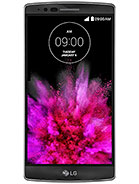
LG G Flex2
The 5.7" Xiaomi Mi Note and Mi Note Pro are both excellent choices for power users. The standard Note packs a 1080p display on a Snapdragon 801 chip, while the Pro edition bumps the resolution up to Quad HD and promotes the SoC up to Snapdragon 810. Both feature a 13MP OIS camera, rich connectivity options, non-expandable 64GB of inbuilt storage and 4MP selfie snappers.

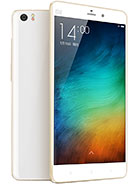
Xiaomi Mi Note • Xiaomi Mi Note Pro
The 5" Oppo R7 and 6" R7 Plus may run on an inferior Snapdragon 615 chip, but impress with superb build quality and slim bodies. The AMOLED screens are a real treat as is the 13MP OIS rear camera and the Color OS on Lollipop. Those aren't cheap but are true attention-getters.
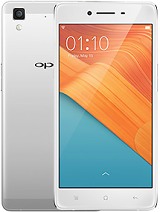
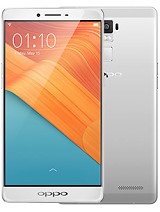
Oppo R7 • Oppo R7 Plus
Huawei Honor 7 or the Huawei P8? We couldn't quite decide when we recently reviewed them, but maybe you can. The P8 is more beautiful, but the Honor 7 is more powerful. Both offer 5.2" IPS 1080p screens, run on the proprietary Kirin 935 chip, come with expandable memory and rich connectivity. The Honor 7 is cheaper, but boasts a 20MP main camera with phase-detection AF, while the P8 has a 13MP OIS camera.
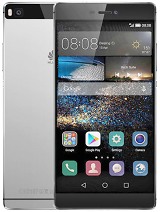

Huawei P8 • Huawei Honor 7
The list of competing smartphones only confirms that the OnePlus 2 is very competitively priced. It improves on the original in a number of ways but it may find it hard to repeat last season's performance and, ultimately, own the box office.
Popping right out of the blue (or Oppo's back door), the original OnePlus One didn't just want a place under the sun. No, it came banging right on the door of the flagship club. Unwelcome, uninvited but ready to win everyone's respect. And it did.
The OnePlus 2 has the background and credentials now but if the competing flagships are showing any sign of fear, it's not the fear of the unknown anymore.
Subscribe to:
Post Comments
(
Atom
)


















































































No comments :
Post a Comment